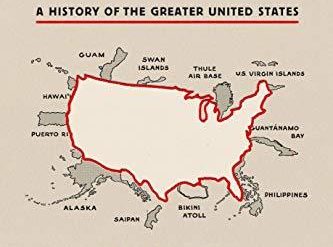
If you treasure your freedom as an American . . . if you’re concerned about how the U.S. Government spends your tax money . . . or if you simply want to understand how our country is managed . . . you owe it to yourself to read this brilliant book that drills down into the reality of NSA surveillance and other secret activities of our country’s intelligence establishment. Alternately mind-boggling and blood-curdling, Top Secret America is the most impressive piece of investigative journalism I’ve read in years.
Dana Priest and Bill Arkin have written a book that, in a rational world, would usher in an orgy of housecleaning through the far reaches of the Pentagon, the CIA, the NSA, the FBI, the Department of Homeland Security, and every other department, agency, or office that pretends to be involved in strengthening our national security.
Top Secret America: The Rise of the New American Security State by Dana Priest and William M. Arkin ★★★★★
3,000 sources of top-secret information
Even then — even if we somehow reined in the known alphabet agencies –– we would only be scratching the surface. Here’s Priest writing about the work of her co-author: “After two years of investigating, Arkin had come up with a jaw-dropping 1,074 federal government organizations and nearly two thousand private companies involved with programs related to counterterrorism, homeland security, and intelligence in at least 17,000 locations across the United States — all of them working at the top secret classification level.” There is an additional three thousand “state and local organizations, each with its own counterterrorism responsibilities and jurisdictions.”
Plus too much information that’s actually published
Perhaps there’s one saving grace in this brouhaha of activity. Priest again: “Post 9/11, government agencies annually published some 50,000 separate serialized intelligence reports under 1,500 titles, the classified equivalent of newspapers, magazines, and journals. Some were distributed daily; others came out once a week, monthly, or annually.” There is so much “information” generated by the counterterrorism establishment that senior managers frequently ignore it all and instead ask their aides to talk to people to find out what’s really meaningful.
It’s not just NSA surveillance, or anything else the intelligence agencies are doing
Don’t be mollified by the belief that all this activity is carried out by the official intelligence agencies. The nation’s warriors have their own alphabet-soup of agencies, departments, and units devoted to the same ends. The Pentagon created a major new entity called the Northern Command headed by a four-star general (the military’s highest rank) to protect the “homeland.” However, the Northern Command has no troops of its own and, to take any action, must ask permission from the leaders of each state’s National Guard and other agencies on whom it depends for personnel.
Other disturbing revelations
Priest and Arkin clearly take a dim view of all this:
- Many, if not all, of the Federal Government’s most closely guarded secrets are vulnerable to theft through simple file-sharing software installed on 20 million computers.
- The Director of National Intelligence, a new position created in 2004 to coordinate the work of the 16 major U.S. intelligence agencies, possesses no power to do so and is frequently ignored by them. But his staff numbers in the thousands, and they hold forth from a new, 500,000-square foot office building. NSA surveillance is just one of a multitude of programs they oversee.
- The degree of duplication in the national security world is chilling. “Each large organization [engaged in counterterrorism] started its own training centers, supply depots, and transportation infrastructure. Each agency and subagency manned its own unit for hiding the identities of undercover employees and for creating cover names and addresses for them and for their most sensitive projects. Each ecosystem developed a set of regional and local offices.”
- Duplication of effort runs so deep that there are three separate lists of “High Value Targets,” one each for the CIA, the Pentagon, and the super-secret Joint Special Operations Command (the people who killed Bin Laden). And “at least thirty-four major federal agencies and military commands, operating in sixteen U.S. cities, tracked the money flow to and from terrorist networks.”
The depth and quality of Priest and Arkin’s research is unexcelled, and their writing is brisk and easy to read. The book benefits from the straightforward, first-person approach Priest adopted. It’s written largely from her point of view, with Arkin’s contributions as a researcher noted in the third person.
About the authors
Dana Priest has reported for the Washington Post for more than 20 years. She won the George Polk Award in 2005 for reporting on secret CIA detention facilities and the Pulitzer Prize in 2006 for uncovering black sites prisons. Her exposure of the deplorable conditions at Walter Reed Army Hospital helped the Washington Post win another Pulitzer in 2007. She deserves another Pulitzer for this illuminating book.
Bill Arkin served in U.S. Army intelligence in 1974 to 1978 and had worked as a consultant, political commentator, blogger, activist, and researcher for a number of progressive organizations before teaming up with Priest to write the widely-acclaimed series of Washington Post articles on which this book was based.
For additional reading
You’ll find this book on The 40 best books of the decade from 2010-19. This is also one of 18 eye-opening books about terrorism.
Check out Top 10 nonfiction books about politics for more good reading.
This is one of the many good nonfiction books about national security reviewed here.
You may also enjoy browsing through 20 top nonfiction books about history.
And you can always find my most popular reviews, and the most recent ones, plus a guide to this whole site, on the Home Page.




























William M. Arkin has been a columnist and reporter with The Washington Post and washingtonpost.com since 1998. He has worked on the subject of government secrecy and national security affairs for more than 30 years. He has authored or co-authored more than a dozen books about the U.S. military and national security.
After 9/11 Washington went nuts trying to start new agencies, and over arm ever aspect of government. The book details the billions of dollars spent on things we didn’t need and ways that the government turned that concern over foreign terrorism against it’s own people. We now have drones flying over the US, police who evict people wearing full riot gear with automatic weapons, and more data collection on Americans than ever before. 1984 is here.